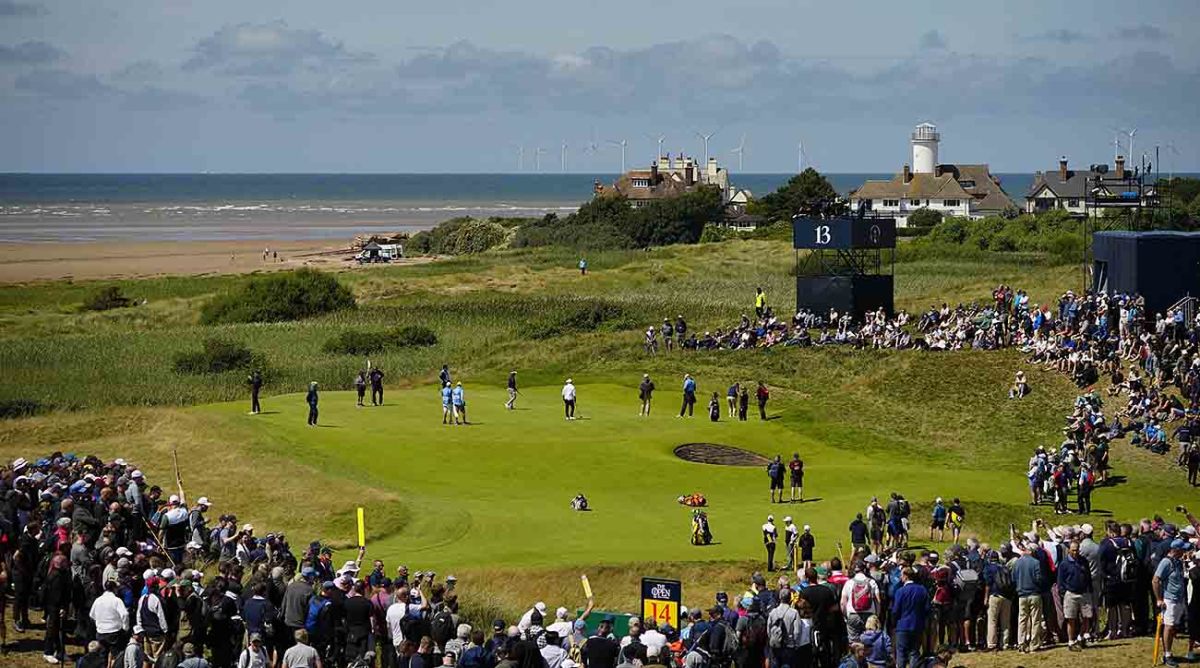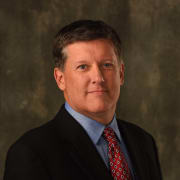At the British Open, Links Golf's Charms and Quirks Are on Glorious Display
HOYLAKE, England — A return to golf’s earliest roots might be one of the best things about the British Open, the tournament that continues to play its events at courses designed when nobody envisioned that the tools for the task would evolve into such technological wonders.
Royal Liverpool is one of just 14 venues to ever host the world’s oldest tournament and will do so for the 13th time when play begins Thursday at the northwest corner of the Wirral Peninsula. Safe to say that when amateur Harold Hilton won the Claret Jug in 1897, few could foresee the likes of what Rory McIlroy and Jon Rahm can do with a golf ball today.
Harry Colt is among those who designed or reimagined the 7,383-yard, par-71 layout that is in use today, but Tom Morris Sr. and James Braid have had their hands on Open venues still in use and they did it mostly by shaping the existing land with the help of horses and mules and other rudimentary tools.

Morris, who won the Open four times using a gutta percha ball (he was a ball-maker as well as champion golfer and course designer) would trip over his wooden-shafted clubs if he saw today's golf gear.
And yet, in many ways, these links courses manage to withstand the test of time. They’ve been tweaked and lengthened and some would say tricked up, but a place such as Royal Liverpool will undoubtedly give players fits during the 151st Open.
"I think you have to just learn how to control your golf ball out here, and not just height but also control spin," said Collin Morikawa, who won the Open two years ago at Royal St. George’s. “I think going back to last year, I remember Jordan (Spieth) talking about creativity.
"Creativity is the biggest thing out here, but also knowing how creative you can be, not getting really stupid with it, but being able to hit your shots, flight it where you want, hit your windows, and I think that's why you see some great players come out of Open Championship wins is because they have to be able to create different shots."
Morikawa is an anomaly. He won the Open in his first attempt, having only played a form of links golf a week earlier at the Renaissance Club at the Genesis Scottish Open. It is there where he struggled with his irons, tweaked them before getting to Royal St. George’s, and then won the tournament—over Spieth, who won the 2017 Open at Royal Birkdale.
Although Tom Watson won the first Open he played in 1975 at Carnoustie and Ben Curtis won the first major championship he ever played at the 2003 Open at Royal St. George’s, some experience is usually required. Watson said he hated links golf even after winning the tournament and in took him time to come to appreciate the intricacies of the experience.
"Links" is often a term used generically to describe a golf course— and it is done so incorrectly. A "links" is not interchangeable with any course. There are various definitions, sometimes not easily explained, but Golf Digest’s description is simple: “A course on oceanside sand dunes that were formed by a receding sea and covered by fertile soil from a river estuary."
MORE: A Trip Into the Open's Past at Musselburgh
Each of the venues used for the Open—now officially 10, although both Turnberry and Royal Lytham & St. Anne’s appear to be on the outside for the time being—has those aspects. Because of their sandy base, they drain exceedingly well, allowing for firm conditions.
Royal Liverpool borders the River Dee which separates it from Wales. While not visible from all parts of the course, it can play a role via wind or rain. And the firm turf, although far greener this week than the baked-out version Tiger Woods played during his 2006 victory here, means more bounce and roll.
And that is part of the challenge. Growing up in Spain, Rahm said he never played links golf until he entered the British Boys Championship as a teenager. The event was to be played at Royal St. George’s and his dad took him to the nearby Royal Cinque Ports for a practice round. (Royal Cinque Ports is one of the four courses that no longer hosts the Open, having done so twice).
"I think it takes quite a bit to figure out," he said. "Where I grew up in Spain, it's usually colder, wet, soft, no roll out, no release, none of that. When you come play links for the first time, it’s a bit of a change."
Rahm said he needed to learn that driver was not necessarily the best option on every hole.
"I'll never forget the first hole was playing downwind and I hit 3-iron and I saw that ball bounce once and twice and three, and just keep on going, which I am more used to seeing the ball bounce backwards and that's it," he said. "It was a really fun day, really fun experience.
"I actually played pretty good for my first showing, and I think I've done O.K. in links golf, and I've played some good golf and I enjoy it every time. I think it's, in my mind, golf at its purest state, no matter what the weather is.
"There's so many ways of getting it done. There's just so many possibilities that makes it even more fun."
Embracing it does not guarantee success, but it helps. There will be bad bounces and slower greens and the draw can be of great importance. Fairway bunkers, unlike those found on the PGA Tour, are actually penal and typically mean a stroke penalty because you have to chip out sideways. Even greenside pot bunkers, with their steep face, offer no guarantees.
"I think the beauty of a links golf course is the weather makes a massive difference," said Martin Slumbers, the chief executive of the R&A, which conducts the Open. "The way the ball moves on the fairways, depending on how firm it is, the ability to control that. The ability to make sure where you want to put the ball versus where the ball has to finish on the green. I think that protection, and then you add in the weather is what makes links golf so difficult and so different and provides more than enough challenge for the players."
Players adopt all sorts of strategies for preparing to play the Open. No. 1-ranked Scottie Scheffler, for example, had never played a links course prior to competing at the Scottish Open two years ago. He’s employed that same plan the past two years.
Morikawa was the same, but he changed it up this year, skipping the Scottish and arriving in England last week. After a day at Wimbledon, he played at Walton Heath (not a links but the home of this year’s Women’s Open) followed by links courses West Lancashire and Royal Birkdale, where Spieth won the Open in 2017 and where it will be played again in 2026.
Defending champion Cam Smith arrived over the weekend, seeing the course for the first time.
Spieth, Rickie Fowler and Justin Thomas played the Scottish Open last week but also fit in a round at nearby North Berwick.
Getting comfortable hitting shots along the ground—as opposed to flying it at the flag through the air—is the simple way of explaining how to adjust. Doing so is another matter.
The winner of the Claret Jug will be the one who handles all those aspects the best—and enjoys the process, too.
